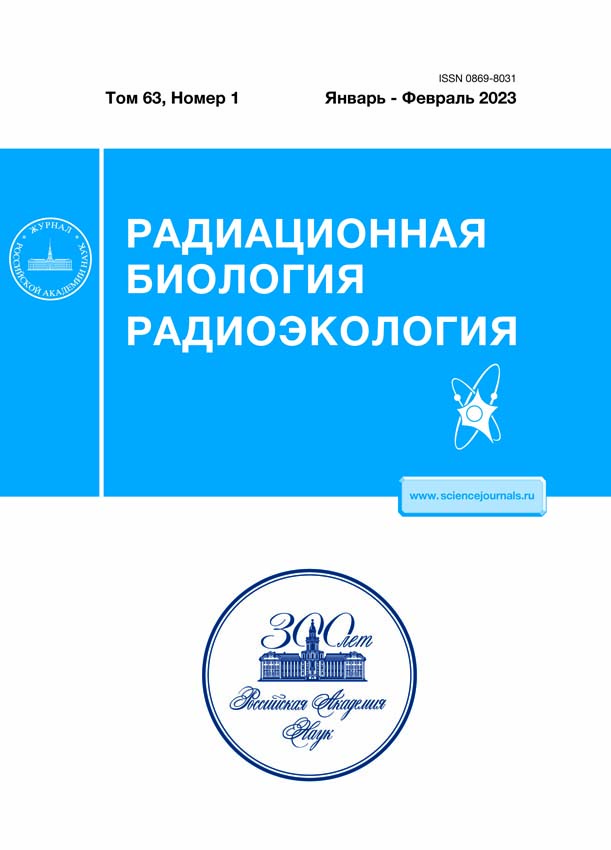Tritium in the Water System of the Pyshma River Floodplain
- Authors: Chebotina M.Y.1
-
Affiliations:
- Institute of Plant and Animal Ecology, Ural Branch of the Russian Academy of Sciences
- Issue: Vol 63, No 1 (2023)
- Pages: 101-107
- Section: Radionuclide
- URL: https://kazanmedjournal.ru/0869-8031/article/view/661149
- DOI: https://doi.org/10.31857/S0869803123010058
- EDN: https://elibrary.ru/JWHXEC
- ID: 661149
Cite item
Abstract
The paper presents data on the concentration of tritium in the water of the river Pyshma, which is under the influence of the Beloyarsk NPP named after Kurchatov, and drinking water of settlements located in the coastal zone of the river. It was found that the content of radionuclide in the water of the river at a distance of up to 400 km below the dam of the Beloyarsk reservoir varies within 13–26 Bq/l and significantly decreases along the course of the river. In the coastal part of the river, above-background tritium pollution enters the drinking water of wells and chinks. It is shown that in water samples from wells, the tritium concentration significantly decreases with increasing depth and distance from the dam of the Beloyarsk reservoir; in the water of private wells, such a relationship was not reliably recorded. The concentration levels of tritium in the spring water of 7 settlements located along the Pyshma river at different distances from the dam of the Beloyarsk re-servoir, almost 2 times higher than in the water of deep chinks, have similar values and do not depend on the distance.
Keywords
About the authors
M. Ya. Chebotina
Institute of Plant and Animal Ecology, Ural Branch of the Russian Academy of Sciences
Author for correspondence.
Email: Chebotina@ipae.uran.ru
Russia, Yekaterinburg
References
- Бадяев В.В., Егоров Ю.А., Казаков С.В. Охрана окружающей среды при эксплуатации АЭС. М.: Энергоиздат, 1990. 223 с. [Badyaev V.V., Egorov Yu.A., Kazakov S.V. Ohrana okruzhayushchej sredy pri ekspluatacii AES. M.: Energoizdat, 1990. 223 s. (in Russ.)]
- Егоров Ю.А. Еще раз о тритии, образующемся при работе АС, и его переносе в окружающей среде // Экология регионов атомных станций. М.: НИО ЭАС ГНИПКИИ “Атомэнергопроект”, 1996. С. 237–250 [Egorov Yu.A. Eshche raz o tritii, obrazuyushchemsya pri rabote AS, i ego perenose v okruzhayu-shchej srede // Ekologiya regionov atomnyh stancij. M.: NIO EAS GNIPKII “Atomenergoproekt”, 1996. S. 237–250 (in Russ.)]
- Особенности радиационной обстановки на Урале / Уткин В.И., Чеботина М.Я., Евстигнеев А.В. и др. Екатеринбург: УрО РАН, 2004. 150 с. [Osobennosti radiacionnoj obstanovki na Urale / Utkin V.I., Chebotina M.Ya., Evstigneev A.V. i dr. Ekaterinburg: UrO RAN, 2004. 150 s. (in Russ.)]
- Трапезников А.В., Молчанова И.В., Караваева Е.Н. и др. Миграция радионуклидов в пресноводных и наземных экосистемах. Т. 2. Екатеринбург: Изд-во Уральского ун-та, 2007. 399 с. [Trapeznikov A.V., Molchanova I.V., Karavaeva E.N. i dr. Migraciya radionuklidov v presnovodnyh i nazemnyh ekosistemah. V. 2. Ekaterinburg: Izd-vo Ural’skogo universiteta, 2007. 399 s. (in Russ.)]
- Сойфер В.Н., Горячев В.А., Вакуловский С.М. и др. Тритиевые исследования природных вод России. М.: ГЕОС, 2008. 285 с. [Sojfer V.N., Goryachev V.A., Vakulovskij S.M. i dr. Tritievye issledovaniya prirodnyh vod Rossii. M.: GEOS, 2008. 285 s. (in Russ.)]
- Трапезников А.В., Чеботина М.Я., Трапезникова В.Н. и др. Влияние АЭС на радиоэкологическое состояние водоема-охладителя. Екатеринбург: АкадемНаука, 2008. 400 с. [Trapeznikov A.V., Chebotina M.Ya., Trapeznikova V.N. i dr. Vliyanie AES na radioekologicheskoe sostoyanie vodoema-ohladitelya. Ekaterinburg: AkademNauka, 2008. 400 s. (in Russ.)]
- Чеботина М.Я., Николин О.А. Радиоэкологические исследования трития в Уральском регионе // Екатеринбург: УрО РАН, 2005. 89 с. [Chebotina M.Ya., Nikolin O.A. Radioekologicheskie issledovaniya tritiya v Ural’skom regione // Ekaterinburg: UrO RAN, 2005. 89 s. (in Russ.)]
- Чеботина М.Я. Тритий в воде Белоярского водохранилища в период работы трех энергоблоков // Водное хозяйство России. 2010. № 4. С. 58–73 [Chebotina M.Ya. Tritij v vode Beloyarskogo vodohra-nilishcha v period raboty trekh energoblokov // Vodnoe hozyaystvo Rossii. 2010. № 4. S. 58–73 (in Russ.)]
- Чеботина М.Я., Николин О.А. Миграция трития от предприятий ядерного технологического цикла в источники питьевого водоснабжения на Урале // Водное хозяйство России. 2013. № 4. С. 90–100 [Chebotina M.Ya., Nikolin O.A. Migraciya tritiya ot predpriyatij yadernogo tekhnologicheskogo cikla v istochniki pit’evogo vodosnabzheniya na Urale // Vodnoe hozyaystvo Rossii. 2013. № 4. S. 90–100 (in Russ.)]
- Куликов Н.В., Реч Т.А., Чеботина М.Я. Тритий в воде болотно-речной экосистемы // Экология. 1984. № 4. С. 85–86 [Kulikov N.V., Rech T.A., Chebotina M.Ya. Tritiy v vode bolotno-rechnoj ekosistemy // Ekologiya. 1984. № 4. S. 85–86 (in Russ.)]
- Чеботина М.Я., Николин О.А. Тритий в воде болотно-речной экосистемы в районе Белоярской АЭС // Уральский геофиз. вестн. 2005. № 7. С. 70–73 [Chebotina M.Ya., Nikolin O.A. Tritij v vode bolotno-rechnoj ekosistemy v rajone Beloyarskoj AES // Ural’skiy geofizicheskiy vestnik. 2005. № 7. S. 70–73 (in Russ.)]
- НРБ-99/2009. Санитарные правила и нормативы. СанПин 2.6.1.2423-09. Приложение 2а. М.: Федеральный центр гигиены и эпидемиологии Роспотребнадзора, 2009. 100 с. [NRB-99/2009. Sanitarnye pravila i normativy. SanPin 2.6.1.2423-09. Prilozhenie 2a. M.: Federal’nyj centr gigieny i epidemiologii Rospotrebnadzora, 2009. 100 s. (in Russ.)]
Supplementary files















